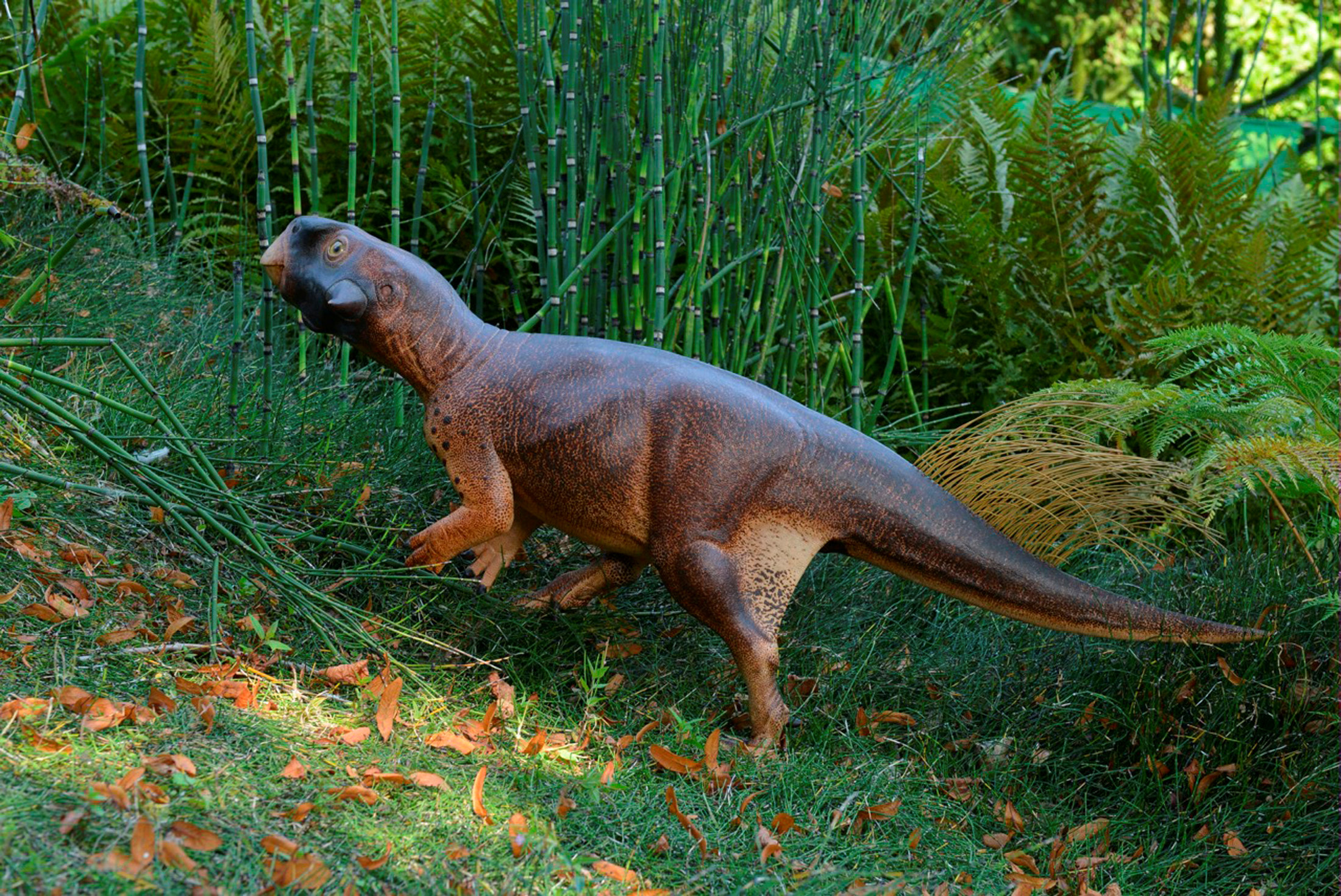Scientists guided by small structures preserved in fossilized skin have deciphered the color and camouflage pattern of a little dinosaur with a parrot-like beak and bristles on its tail that roamed thick forests in China about 120 million years ago.
Psittacosaurus was mainly brown but with a paler underside of the tail and belly, a pattern called countershading that may have helped the 5-foot-long (1.5-meter) bipedal plant-eater go unnoticed by hungry predators, the scientists said on Thursday.
It also had a heavily pigmented face and hind legs that were striped on the inside and reticulated and spotted on the outside.



